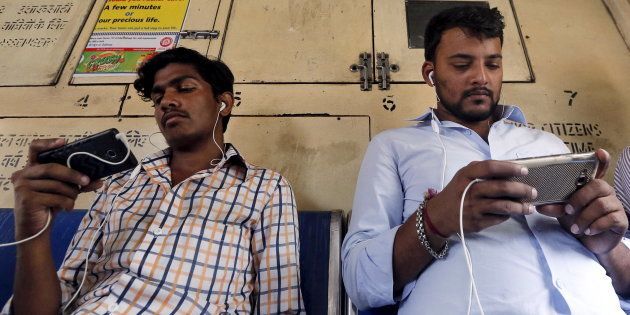
The explosion of cheap mobile data has helped drive up India's Internet user base by as much as 28 per cent with over 355 million Indians online, but smartphones still remain out of reach for a majority of the country's population. That was the underlying sombre message in the annual Internet Trends Report by Mary Meeker.
The latest report, a study of worldwide Internet trends, highlights how Indians continue to embrace mobile web and the growing stable of digital services, thanks to declining prices of smartphones and cheap data offers. However, the country's economy, while promising, has several fundamental challenges that could potentially throw a spanner in its digital ambitions.
The report by Meeker, a partner with US venture capital firm Kleiner Perkins Caufield Byers, has become iconic among industry observers. Here are the key highlights from the report.
8 out of 10 Indians use phones to get online
India now ranks second in the world behind Nigeria on mobile Internet use, a huge boon for mobile content providers.
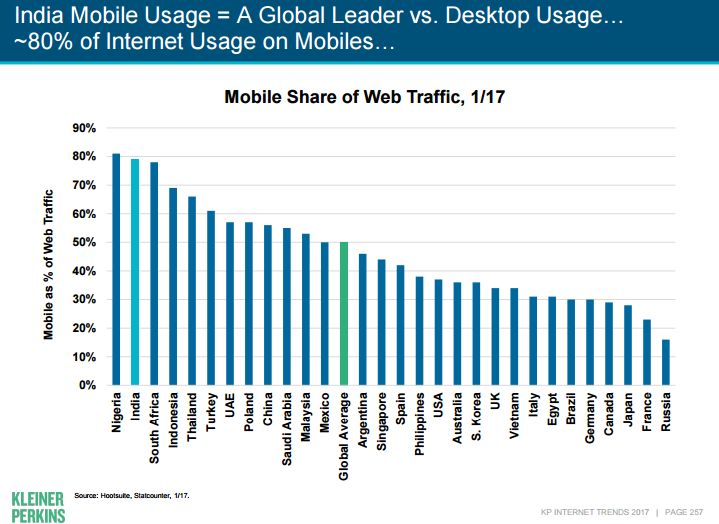
Overall, India now has 355 million Internet users up 28 per cent from last year. India's Internet base is now second in the world behind China.
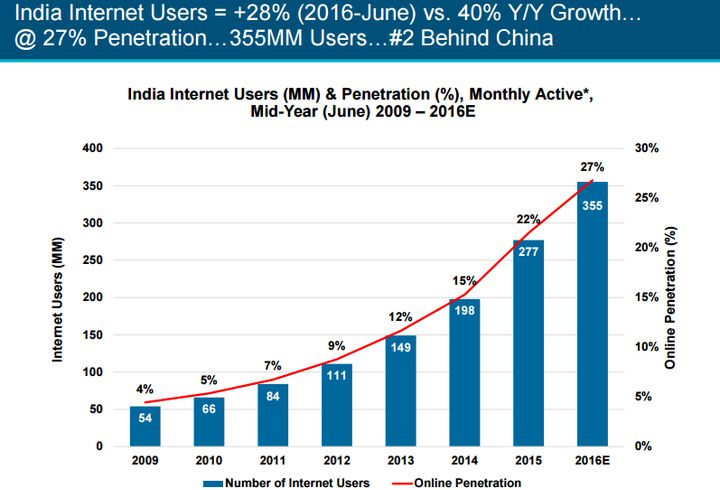
Smartphones still expensive
While overall prices of smartphones and data is declining, the average smartphone is still unaffordable for a majority of India's 1.3 billion citizens, making up a staggering 8 per cent of the annual average per capita GDP.
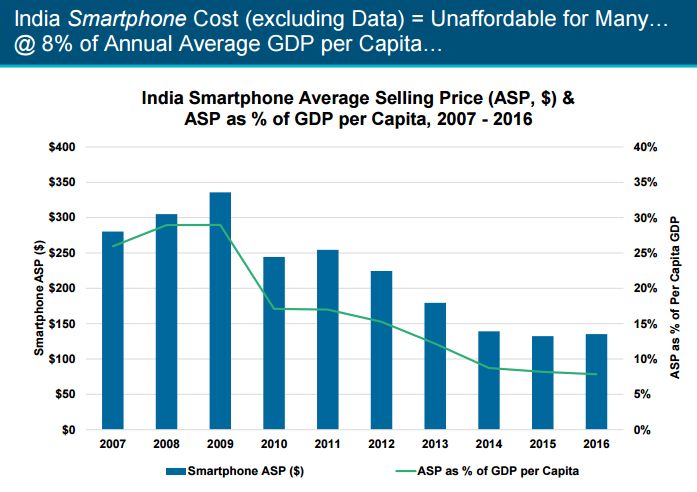
Fierce Competition: growing share of Chinese phones
India is seeing intense competition in telecom space both from hardware makers and telco service providers. The entry of Reliance Jio and its cheap data offers -- a first for the industry last year -- has hugely disrupted the prices mobile data space in India, unleashing a price war that is ultimately a win for consumers.
On the hardware front, the share of Chinese smartphones, which mainly compete on slick features, in Indian market has skyrocketed with over 50 per cent market share. While Indian manufacturers have seen market share decline from 40 per cent in 2014 to under 20 per cent in the first quarter of 2017. Popular Chinese brands in India include Lenovo, Xiaomi, Oppo, and Vivo.

On the wireless services front, Bharti Airtel, Vodafone, and Idea collectively have about 60% market share. But Jio has mounted stiff competition. Since launching, Jio has seen about 72 million subscribers convert to paid Jio Prime subscribers out of 108 million sign-ups.
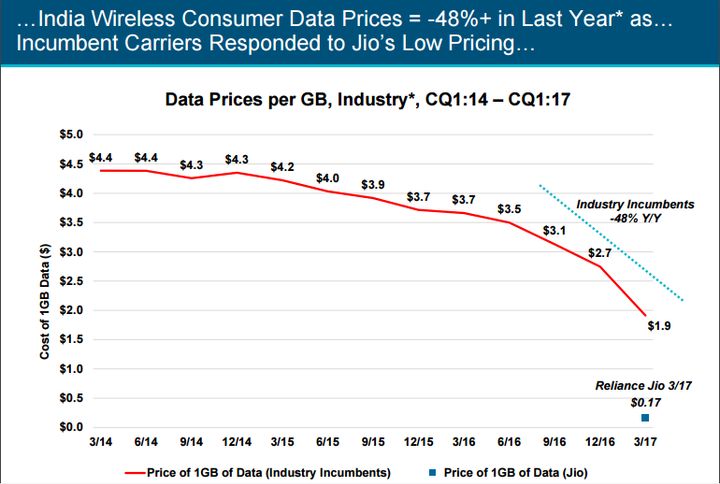
Data costs per GB have come down from $3.50 to ~$3.15 quarter over quarter. Average cost of 1 GB of data is about $0.33 as of first quarter 2017, said the report.
Boom time for apps, and service providers
Cheap broadband data has meant more and more Indians are consuming media content online with several Internet-based content service disrupting more traditional media consumption patterns. With a young demographic and the vast majority of India's Internet users under the age of 34, the trends in media are also changing.
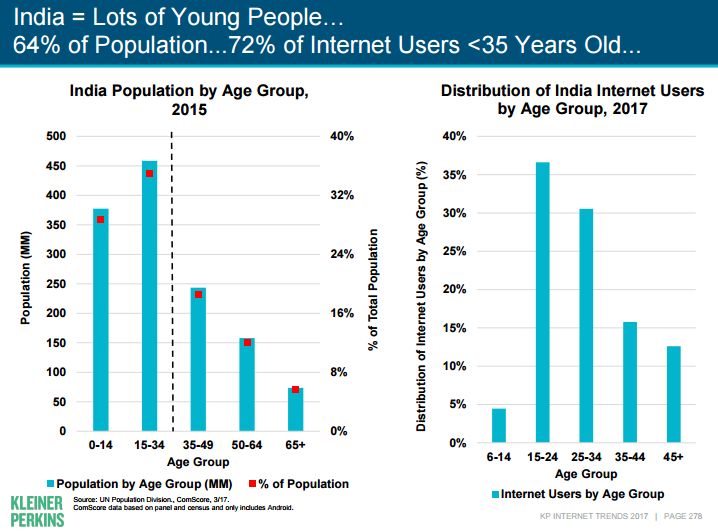
And Indian millennials are increasingly consuming on-demand web video shows such as millennial-focused stand-up comedy shows over, say, scripted dramas and reality TV.
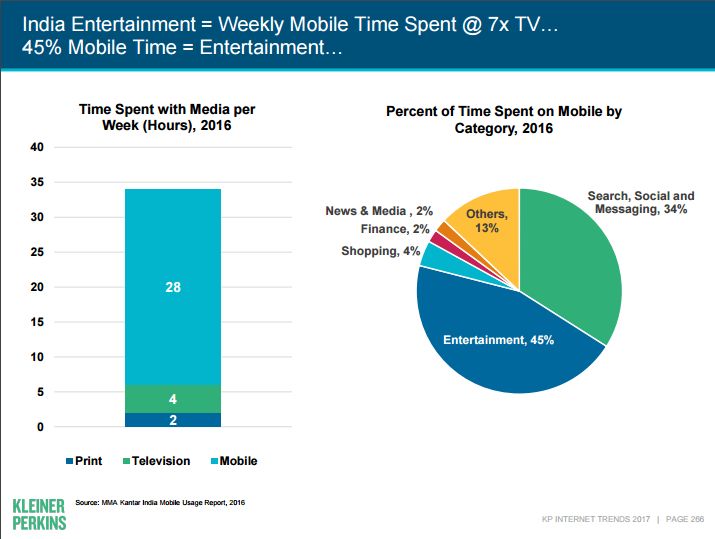
India macro challenges
However India's growing young demographic and its pace of job creation is out of sync, a huge concern for future growth. Additionally, gender disparity and female participation in the workforce stands at an abysmal 27 per cent, nearly half of the global average of about 50 per cent.
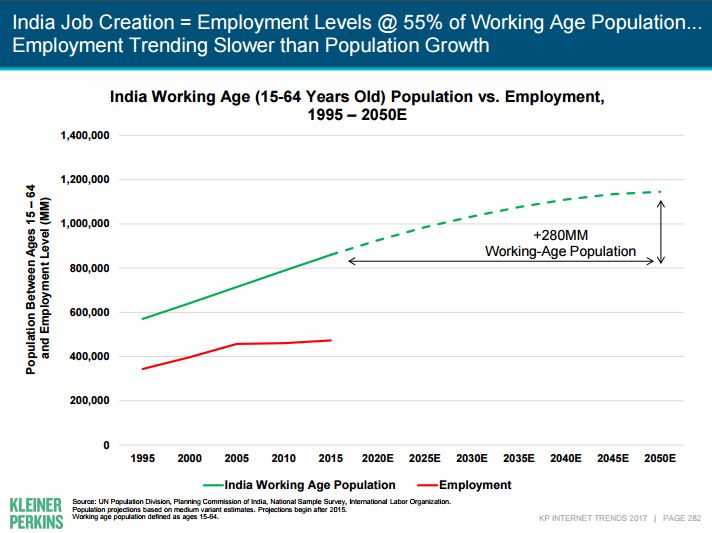
On the infrastructure front, the country faces several structural challenges, and in general ranks low in infrastructure competitiveness. On a scale of 1-8, India ranks at 4.03 below the average as per World Bank's infrastructure rankings for Asia, based on a competitiveness score. Hong Kong leads the region followed by Singapore with a score of about 7 out of 8.
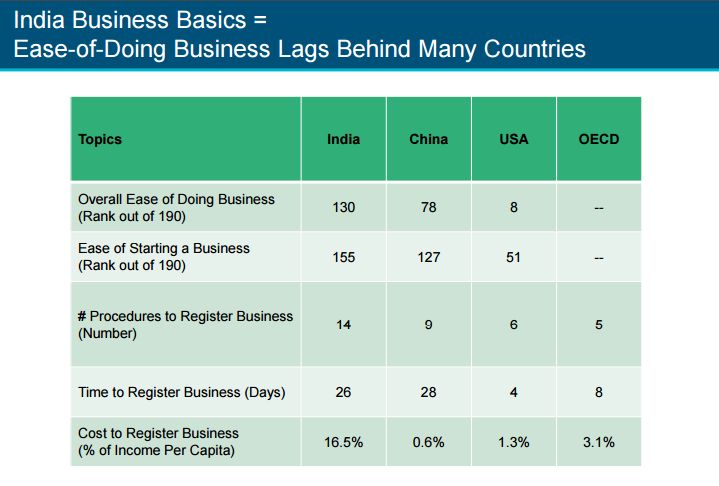
It is clear from the report's stats that India will have to continue economic reforms if it wants to extend the full benefits of the digital economy to its growing population.